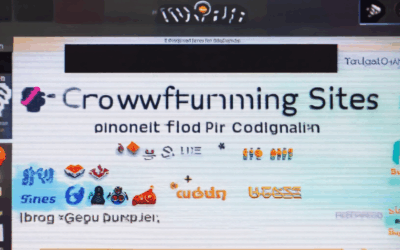In the dynamic realm of video games, a captivating pitch presentation can be the catalyst for success, distinguishing your concept from the crowd. Whether you’re an aspiring developer, a seasoned entrepreneur, or an investor seeking the next big hit, mastering the art of presenting your game idea effectively is crucial. This guide delves into proven tips and strategies to craft a compelling pitch that resonates with your audience and drives meaningful engagement.

How to Present a Game Pitch
To craft an effective game pitch, focus on clarity, engagement, and resonance with your audience. Here’s a step-by-step guide:
1. Start with a Hook
Grab attention with a surprising fact, emotional appeal, or unexpected twist. For example, “Imagine a world where [unique concept] becomes reality.” This sets the stage for curiosity.
2. Tell a Relatable Story
Share a narrative that mirrors the audience’s experiences. Whether it’s a personal struggle or a shared desire, anchoring the pitch in relatability builds connection. For instance, “Many of us feel trapped in repetitive routines—our game offers a escape.”
3. Highlight Unique Features
Clearly articulate what makes your game stand out. Use visuals or descriptions to showcase innovative mechanics, immersive environments, or groundbreaking narratives. Example: “Our proprietary engine allows for real-time environmental interactions never seen before.”
4. Address the Competitive Landscape
Acknowledge competitors but emphasize your game’s advantages. Stay neutral yet confident, positioning your offering as the superior choice. Example: “While many games focus on combat, ours prioritizes storytelling and character development.”
5. Include a Call to Action
Guide the audience on the next steps. Whether it’s watching a trailer, visiting your website, or joining a community, make it easy for them to engage further. Example: “Explore our world at [Game Website](https://www.indiedevgames.com/game/pitch).”
6. Optimize for SEO
Integrate keywords naturally. Use terms players might search for, like “[Game Title] review” or “unique game mechanics.” This improves visibility and attracts the right audience.
7. Keep It Concise
Aim for around 500 words. Balance detail with brevity to capture interest without overwhelming. Focus on key selling points and let visuals or additional materials supplement the pitch.
8. Reflect Your Brand Voice
Align the tone with your brand. For Indie Dev Games, embrace enthusiasm and support, fostering a collaborative environment for creators.
By combining these elements, you’ll create a compelling, memorable pitch that resonates with your audience and stands out in the crowded gaming landscape.
How to Create the Perfect Pitch Presentation
A great pitch presentation is essential for capturing the attention of your audience and effectively communicating your value proposition. Here’s a step-by-step guide to crafting the perfect pitch:
- Start Strong with a Hook: Begin your presentation with a compelling hook to immediately engage your audience. This could be a surprising statistic, a thought-provoking question, or a memorable anecdote related to your topic.
- Clearly Define the Problem: Clearly articulate the problem or challenge your audience faces. Use relatable examples or case studies to illustrate why this issue matters and how it impacts their lives or businesses.
- Present Your Solution: Introduce your product, service, or idea as the solution to the problem you’ve just outlined. Highlight its unique features, benefits, and how it stands out from competitors. Use visuals like charts, graphs, or images to support your claims.
- Tell a Story: Share a story or testimonial that demonstrates the impact of your solution. This adds emotional appeal and helps the audience connect with your message on a deeper level.
- Keep It Simple and Visual: Avoid overwhelming your audience with text-heavy slides. Use bullet points, infographics, and high-quality images to convey your message effectively. Stick to a maximum of 10 slides to keep your presentation concise and focused.
- Anticipate Questions: Prepare for potential questions or concerns by addressing them upfront. Use data, examples, or analogies to back up your claims and build trust with your audience.
- End with a Clear Call to Action: Conclude your pitch with a specific request or action you want the audience to take. Whether it’s scheduling a demo, visiting your website, or purchasing your product, make it easy for them to follow up.
- Practice and Refine: Rehearse your presentation multiple times to ensure smooth delivery. Pay attention to your body language, eye contact, and pacing to maintain engagement throughout.
- Tailor Your Pitch: Customize your presentation for each audience. Adjust your content, tone, and visual style to match their interests and background. For example, focus on different benefits like efficiency for decision-makers or ease-of-use for end-users.
By following these steps, you’ll create a pitch that is not only persuasive but also memorable. Keep practicing, and soon you’ll be delivering standout presentations that captivate your audience and drive results.

How to Win a Pitch Presentation
To excel in a pitch presentation, focus on preparation, storytelling, and engagement. Here’s a step-by-step guide to help you deliver a compelling pitch:1. **Research and Understand Your Audience**: Tailor your pitch to the specific audience. Learn about their interests, pain points, and goals. This will help you align your message effectively.2. **Craft a Clear and Compelling Story**: A great pitch isn’t just about features—it’s about the story behind your product or service. Use relatable examples, analogies, and emotional hooks to captivate your audience.3. **Practice and Rehearse**: Memorize your key points and practice your delivery. Anticipate questions and prepare thoughtful responses. Knowing your material helps reduce nervousness and boosts confidence.4. **Use Visual Aids Wisely**: Slides should complement your speech, not overshadow it. Use visuals like charts, diagrams, or images to support your narrative but keep text minimal to avoid overwhelming the audience.5. **Be Concise and Impactful**: Stick to the main points and avoid unnecessary details. Use strong verbs and active voice to convey your message clearly and persuasively.6. **Engage Your Listeners**: Make eye contact, use hand gestures, and encourage interaction. A Q&A session can reveal your product’s strengths and address potential concerns, which can solidify your position as a thought leader.7. **Follow Up Post-Presentation**: Send a thank-you email summarizing your key points and offer to provide additional information. This reinforces your commitment and professionalism.By combining these strategies with a genuine passion for your work, you can create a memorable pitch that stands out and resonates with your audience. Remember, the goal is to connect emotionally while delivering valuable insights that set your offering apart.
What Are the Rules for Pitch Presentation?
Creating an effective pitch presentation requires careful planning and execution. Here are the essential rules to keep in mind:
- Know Your Audience:** Understand who you’re presenting to. Tailor your content to their interests and background.
- Be Clear and Concise:** Avoid jargon and get straight to the point. Keep your slides simple and easy to follow.
- Practice Your Pitch:** Rehearse repeatedly to build confidence and ensure smooth delivery. Time yourself to stay within the allotted timeframe.
- Highlight Key Features:** Focus on what makes your product or service unique. Use visuals and data to support your claims.
- Anticipate Questions:** Prepare for potential questions and challenges. Have backup information ready to address concerns.
- Engage with the Audience:** Make eye contact, use body language, and encourage interaction to maintain interest.
- End Strong:** Conclude with a clear call to action or next steps. Leave the audience with a lasting impression of your value proposition.
- Review Feedback:** After presenting, seek feedback to identify areas for improvement and refine your approach for future pitches.
By following these guidelines, you can deliver a pitch that captivates your audience and effectively communicates your message. Remember to leverage our resources at Indie Dev Games for further tips and tricks in game development and pitching.
The 5-5-5 Rule for Better Presentation
The 5-5-5 rule is a simple yet effective guideline for creating a clear, concise, and impactful presentation. Here’s how it works:
- Five Slides: Keep your presentation to five slides maximum. This ensures your message is concise and avoids overwhelming your audience with excessive information.
- Five Minutes: Aim to deliver your presentation in five minutes. This timeframe encourages you to speak clearly and efficiently, allowing your audience to stay engaged without feeling rushed.
- Five Key Points: Focus on five main ideas or takeaways. Each slide should revolve around one main point, making it easier for your audience to follow and retain the information.
This rule is particularly useful for:
- Keeping Your Audience Engaged: By limiting the number of slides and the duration, you maintain your audience’s attention and prevent them from getting lost in too much information.
- Encouraging Clarity: Each slide should be focused on one main idea, ensuring your message is direct and easy to understand.
- Making Your Presentation Memorable: With a clear structure and key takeaways, your audience is more likely to remember your main points long after your presentation ends.
To apply the 5-5-5 rule effectively:
- Plan Each Slide: Ensure each slide corresponds to one main idea or point. Avoid adding too much detail that doesn’t contribute to your overall message.
- Time Yourself: Practice delivering your presentation within five minutes to ensure you stay within the recommended timeframe.
- Limit Details: Stick to five key points per slide to keep your content organized and focused.

How to Structure a Pitch Presentation
A well-structured pitch presentation is essential for capturing attention and conveying your message effectively. Here’s a step-by-step guide to crafting a compelling pitch:
- Clarify Your Objective
- Define who your target audience is and what problem you aim to solve.
- Identify the key message or value proposition you want to communicate.
- Create a clear and concise slide outline. Aim for 10-15 slides maximum.
- Include visuals, charts, and graphs to support your points.
- Write speaker notes for each slide to guide your delivery.
- Use a consistent theme and font style across all slides.
- Keep text minimal – prefer bullet points or short sentences.
- Use high-quality images, infographics, and icons to enhance visual appeal.
- Tell a story that resonates with your audience’s experiences.
- Use anecdotes, case studies, or testimonials to illustrate your points.
- Engage the audience with questions, polls, or calls to action.
- Research your audience’s background, interests, and pain points.
- Adapt your language and examples to match their understanding level.
- Anticipate questions and prepare thoughtful responses.
- Rehearse your presentation multiple times to perfect your delivery.
- Record yourself to identify areas for improvement.
- Seek feedback from colleagues or mentors before presenting.
- Edit out unnecessary details to keep your message focused.
- Ensure your visuals align with your narrative and key points.
- Double-check for grammar, spelling, and factual accuracy.
Conclusion: A structured pitch presentation begins with clear preparation, continues with thoughtful design and storytelling, and culminates in confident delivery. By focusing on these elements, you can create a presentation that captivates your audience and effectively communicates your message.




0 Comments